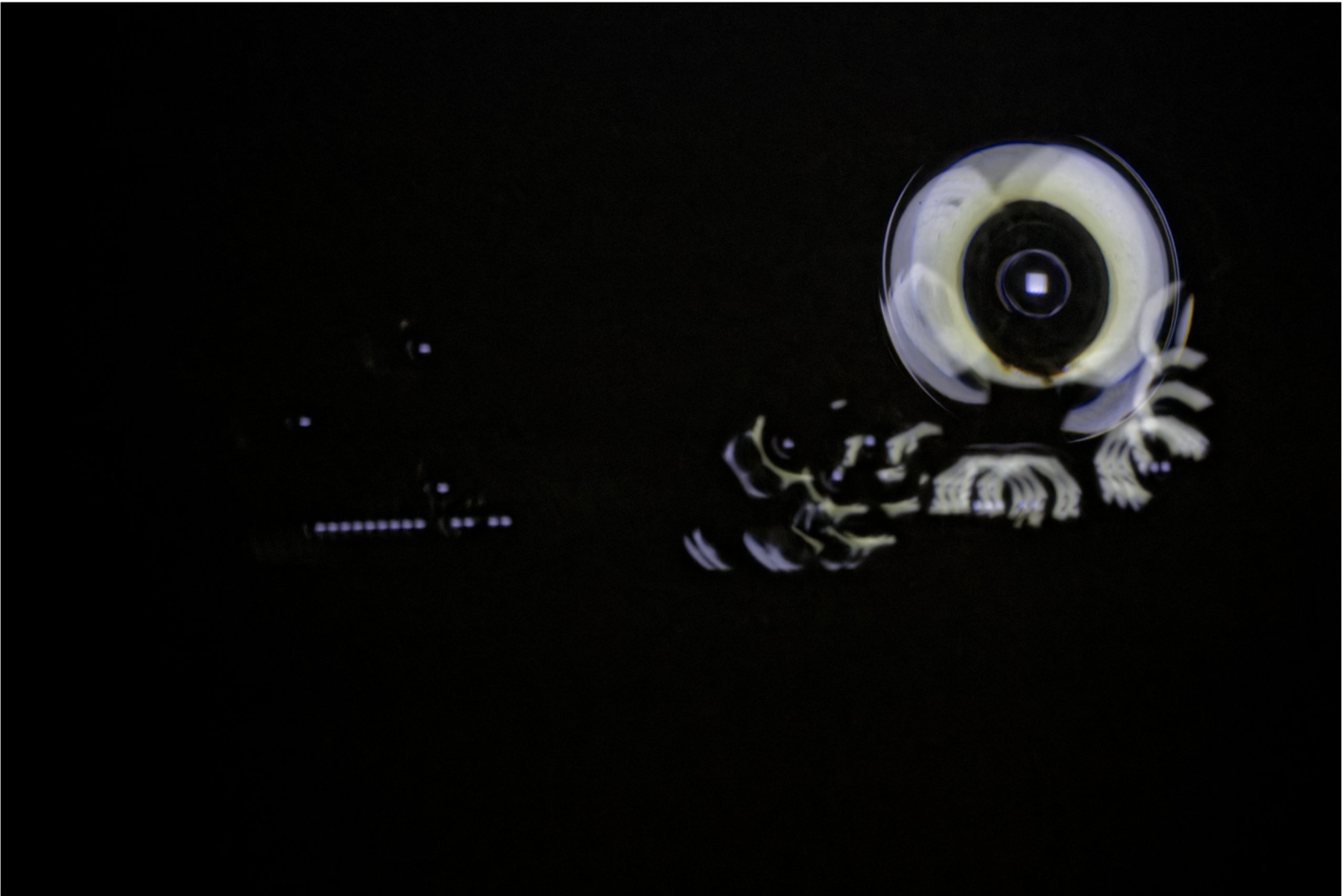Behind the Citylights/Kadonnut kaupunki installation is a phenomenon that Kallio came across by chance years ago. She wanted to produce a fine beam of light, and fitted an aluminium sheet (a gobo), with just a tiny pinhole in the middle of it, inside a spotlight. The result was unexpected – not a ray of light at all, rather, what appeared on the wall was a pinhole-camera image of the interior of the spotlight.
This phenomenon is employed in a wall composed of punch cards from the late 1950s. In their day, these cards were used to run the results of scientific experiments, a summary diagram drawn, a letterpress printing plate made of it, from which a picture – a print – was reproduced in a book. The perforations now act as pinhole cameras; besides the rectangular holes, the spotlights cast circular projections of their own lamps onto the surfaces that they strike. The punch card acts like a musical score, calling to mind the perforated paper rolls made for pianolas. In the installation the light sources interpret this ”composition”, which can be imagined as being a new type of record of a scientific process.
Hundreds of individual ”light compositions” have been photographed from these projections. The editing of the animation loop Mustat kyyneleet (Black Tears) assembled from the images has been quietly guided by Sofia Gubaidulina’s composition Vivente-Non Vivente. This has been done using an ANS synthesizer, in which photocells in the device read the composer’s drawn marks and transforms them into sound*.
Is a light phenomenon resulting from chance and experiment sufficient in itself to constitute an artwork? The question expands to take in the idea of the contribution and significance of experiment in the artistic working process.
These works deal with the limits of printability – how far away can we go from the equation formed by a printing plate and a paper print, while still preserving its structure. Kallio goes round the edges, seeks out vantage points, feels for potential new routes. She is interested in how such a structure can be realized in various material forms, such as, for example, in modes of experimental film and graphic notation.
Schematicness is a characteristic of punch cards and stereotype printing plates – also known as clichés. In the Muistikortit (Memory Cards) suite clichéd mountains, waterfalls, ruins from 1980s tourist postcards in the form of pixelated transfers meet the organic patterns of Finlandia Hall’s marble cladding and the broken surface of a kitchen worktop. What these sets of works have in common is imagination filtered through a schema, the author’s role being to act as a kind of transformer.
* inventor Yevgeny Murzin, 1958, https://en.wikipedia.org/wiki/ANS_synthesizer
S. Gubaidulina, The Seven Last Words • Rubayat • Vivente—Non Vivente, Melodia 1970
Päivikki Kallio (b. 1952) lives and works in Helsinki.
Kallio’s works spring from material experiments that are combined with themes of history, melancholy and existence. Since the late 1980s, her working process has focussed on printed matter, i.e. investigating the spatial, material and conceptual possibilities of printed art. These issues were focal when Kallio was Professor of Printmaking at the Academy of Fine Arts, Helsinki in 2010–2015, and are also addressed in the book she edited, Siirtämisen ja välittymisen taide (Art of Transfer and Transmission, The University of Arts Helsinki/ Academy of Fine Arts, 2017). Kallio has been showing in exhibitions since 1978. In 1980, she received a recognition award at the Vaasa International Print Biennial for young artists and, in 2017, a Lifetime Achievement Award from the Finnish Art Society.




